#Atsutoshi Umezawa
Text
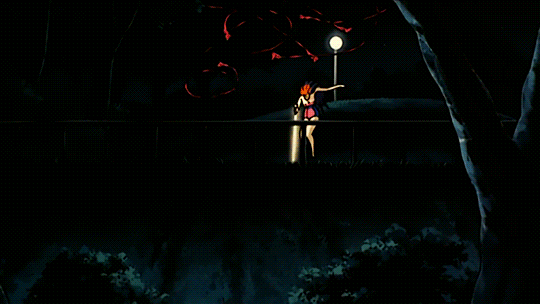

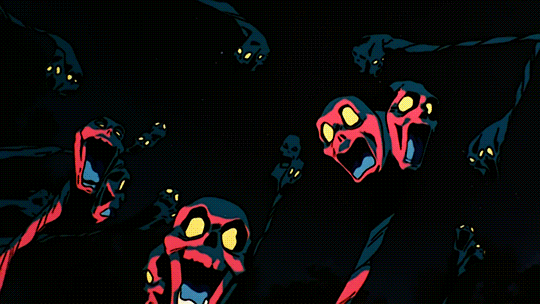

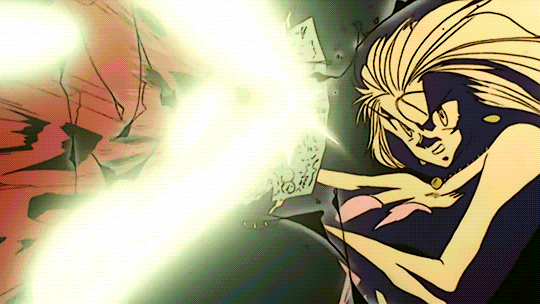
GHOST SWEEPER MIKAMI!: GOKURAKU DAISAKUSEN!! (1994) dir. ATSUTOSHI UMEZAWA
160 notes
·
View notes
Text
Interview with director of Pretty Cure All Stars F (Yuta Tanaka) - Translated by Leontoi
I provided the link to the original translation above, but there were a few grammatical issues. I cleaned up and edited the translation below. It's a great interview and I recommend reading it after watching the movie!
-----
──The theme of the 20th anniversary movie is "What is Precure?" Why did you choose this as the theme of the movie?
I feel that because the Pretty Cure series has continued for so long, it has become extremely diverse.
Over the past 20 years, various Precures and Pretty Cure works have been created.
As a result, I think that the beginning of deciding the movie's theme was because I felt that it was no longer possible to say in one word, "What is Precure?"
For example, in terms of setting, when I started working 15 years ago, only ordinary girls could transform into Pretty Cure.
However, recently, more people with various origins, such as a mermaid and an android, are becoming Precures.
In addition to the main series for children, there is "Kibo no Chikara ~Adult PreCure '23~" which depicts the future of PreCure, and the stage play "Dancing☆Star PreCure", etc.
Derivative works aimed at adult fans who have loved the Pretty Cure series for a long time, as well as spin-off works from the main series, are now being created.
PreCure has continued to change with the times, so these may be part of that change.
However, the definition of a Pretty Cure has become vague, as to what makes someone a Pretty Cure and what doesn't.
In that case, asking this question once again might be an appropriate theme for the 20th anniversary.
Or so I thought.
──Tanaka-san, you have been involved in the production of the Pretty Cure series for over 15 years since "Yes! Pretty Cure 5" (2007).
In other words, from your point of view as one of the creators, you feel that there has been a big change in Pretty Cure, right?
This is just my personal opinion, but I feel that the creators of the early Pretty Cure series were really stoic and created anime with only the children in mind.
There were adult fans who enjoyed Pretty Cure back then, but the creators basically didn't care about them that much.
UMEZAWA Atsutoshi-san, who was the producer of the Pretty Cure series from 2009 to 2013, said this at the time.
"If we are too conscious of the adult audience, children will see right through it and feel that it is not theirs, and those who are our original target audience will turn away from Pretty Cure. In that case, it will no longer be PreCure."
I strongly sympathize with his opinion, and have been involved in the production of Pretty Cure while valuing it.
However, as the title suggests, the main target audience for "Otona Pretty Cure," are adults who used to like PreCure, and I think this work was created with their feelings in mind.
("Otona" means "adults" in Japanese.)
Although there are parts that I sympathize with,
Now that a "Pretty Cure work whose main target audience is adults" has been born, it's finally become difficult to understand what Pretty Cure is.
Going forward, I think the most important thing about the Pretty Cure series is that it was created with the children who are currently watching it in mind, but as a business, we need to consider other directions as well. That may be the situation. I also wonder what will happen to Pretty Cure in the future.
-----
About All Stars F.
-----
──This movie is an All Stars movie that features all 78 Precures from the past.
Actually, at first I wasn't planning on making an All Stars movie.
I thought it would be impossible to have all 78 people appear in the 70-minute length film, so I had an idea to divide it by different generations.
There was also an idea that only characters from three generations (Hirogaru Sky, Delicious Party, and Tropical Rouge) would appear, or they and several other Precure characters from other generations.
But, the idea of all three generations of PreCure coming together has been done so many times that I didn't think it felt fresh.
PreCure All Stars movies were made every year from 2009 to 2016.
However, with the exception of this work (PreCure All Stars F), we have only produced it for the 15th anniversary (2018) since then.
I thought, "If that's the case, it would be great if we could make it consist of the latest 9 generations of Pretty Cure series, who haven't appeared in many All Stars movies."
Considering the characters' activities in a 70-minute movie, I think that's about as long as we can manage in terms of the number of people.
However, due to various circumstances, we ended up having all of the Pretty Cure All Stars appear in this movie (lol).
──So you went through a lot of hardships.
Hahaha (lol). Planning is a living thing, so it changes over time.
──Was it difficult to get all 78 people to appear in this movie?
Oh no... there are so many people that it's impossible to treat everyone equally...
The length of the movie is about 70 minutes, so it can't be made any longer. Also, whether it's possible just because the movie time has been increased is another question. After all, the numbers are big.
That's why we decided to narrow down the number of characters who appear frequently in this movie. I wanted to show the Precures from all the different series as equally as possible, but I think it was difficult in reality.
──However, this film has recorded the highest box office revenue ever, and I feel that it has been very well received by the audience.
The theme of this movie is "What is Precure?", and the character Cure Supreme/Prim appears as an original Precure exclusive to this movie.
Cure Supreme, she embodies the antithesis of the question, "What is Precure?"
Throughout the anime series, the Precures (Precure warriors) have basically been portrayed as ``strong, cute, and cool beings.''
And Prim is a character who is interested in PreCure, seeing only one aspect of them being "strong."
However, she lacked consideration for why Precure are strong and cool, and she didn't even try to find out why they were so strong and cool.
But I think what we've been making about over the last 20 years is the ``why'' part of why Precures are so strong.
The desire they have to become who they want to be.
They stand up hand-in-hand with someone.
Due to the aforementioned, they do not give up.
...That is why Precures are so strong.
I wanted to convey that basic idea in this work as well.
──At the end of this movie, Supreme realized "Why the Precures are so strong," and the Precures extended a helping hand to her.
Actually, in this movie, I wanted to focus on promoting good and punishing evil.
My first idea for the story of this movie was that I wanted it to end with the Precures completely defeating Supreme and making her disappear.
But in the end, the Precures extended a helping hand to her, even though they had fought against her many times before.
As a creator, I felt that I was a little naive in some ways, but I have no regrets. I think we've come back to the idea that "Precures are all about reaching out to even the enemy, right?"
──In the final scene, I felt that Puka and Supreme had become true Precures.
It's not explained at all in the movie, so I don't think it's wrong to say that they became Precures, and I hope people who watch it can come up with their own interpretations.
Speaking of characters, Supreme is a god-like being from another world.
She has powers that are far from human, such as the ability to reshape the world, and she can be described as a "superior being" or "transcendence", and it can be said that she alone is a complete being.
But that's not the case with Precure, and because each of them is, in a sense, an "imperfect being", I think there is a part of them that wants to join hands with everyone and stand up for themselves.
Supreme admires the appearance of such Precures.
And she created Puka from within herself. Originally, Supreme and Puka were completely the same entity (Supreme), but they separated into two entities.
This caused a rift and change in her being.
Depending on how you look at it, you could say that she went from being perfect to being imperfect, but personally, I find her imperfections more appealing than her perfect self.
Don't you think "imperfect" means "human"?
──Lastly, I felt that the design was reminiscent of the first generation (Futari wa Pretty Cure), with Supreme's color being black and Puka's color being white.
I think so.
It's not an homage to "Futari wa PreCure," but I thought it might be a beautiful ending to the 20th anniversary movie.
This is just a matter of how the movie looks.
──Why did both of them become Precures?
I think that's the "miracle of Pretty Cure".
WASHIO Takashi-san, the founder of the PreCure series, said to me while I was making this movie, "I want you to stop portraying admiration for Precures as evil," which was also a big inspiration.
Supreme has done a lot of incredibly annoying things, including destroying and re-creating our world.
However, when asked if she is an evil being, I have a slightly different image of her than an evil being.
More than anything, she wanted to become a Precure.
I wanted to save her that feeling.
I wanted the children to look up to Precures, so I felt like I shouldn't deny Supreme's feelings.
──What is the answer that the production team gave to the question “What is Precure?”
After much discussion, one of our answers was "Connect," which is also our catchphrase, because Precures have been connecting generations and feelings for 20 years.
However, when asked "What is Precure?", I ended up saying, "I don't really understand."
It's a series that has connected many people's feelings, so I think it's impossible to sum up the answer to the question of what Pretty Cure is in one word.
There are as many different types of PreCure as there are PreCure works, and we didn't want the production side to force us to say, ``This is what PreCure is!'' or to give a narrow answer.
The idea was to ask the movie audience a question within the movie, and leave it up to them to answer the question, ``What is PreCure?''
And I think it's important to connect this to the future. Be flexible when it comes to change, while preserving what needs to be protected. I think it's important to change with the times. If we do that, more new PreCures that we can't even imagine now may be created in the future.
#there was a part 1 to the interview but it was about go princess so it's not relevant#this interview is long enough as it is already#also the movie was F*CKING AMAZING#precure#pretty cure#precure all stars f#cure supreme#cure puka#yuta tanaka#translated by someone else#edits by me
42 notes
·
View notes
Link
The official DigiFes 2019 event (held at the Maihama Amphitheater on July 28, 2019) had a “20th Anniversary Memorial Pamphlet” sold on-site. The first section, “Animation Play Back!!”, contained comments from staff for all of the Digimon animated series released to date:
Digimon Adventure: Hiromi Seki (producer) and Hiroyuki Kakudou (series director)
Digimon Adventure 02: Hiromi Seki (producer) and Hiroyuki Kakudou (series director)
Digimon Tamers: Hiromi Seki (producer) and Yukio Kaizawa (series director)
Digimon Frontier: Hiromi Seki (producer) and Yukio Kaizawa (series director)
Digimon Savers: Atsutoshi Umezawa (producer), Hiroaki Shibata (producer), and Naoyuki Itou (series director)
Digimon Xros Wars: Hiroyuki Sakurada (producer), Tetsuya Endou (series director), and Yukio Kaizawa (series director)
Digimon Universe Appli Monsters: Daichi Nagatomi (producer) and Gou Koga (series director)
Digimon Adventure tri.: Yousuke Kinoshita (producer) and Keitarou Motonaga (director)
#Digimon#Digimon Adventure#Digimon Adventure 02#Digimon Tamers#Digimon Frontier#Digimon Savers#Digimon Xros Wars#Digimon Universe Appli Monsters#Appmon#Digimon Adventure tri#Hiromi Seki#Hiroyuki Kakudou#Yukio Kaizawa#Atsutoshi Umezawa#Hiroaki Shibata#Naoyuki Itou#Hiroyuki Sakurada#Tetsuya Endou#Daichi Nagatomi#Gou Koga#Yousuke Kinoshita#Keitarou Motonaga
16 notes
·
View notes
Photo


I generally don’t talk about art/animation much because it’s not my particular specialty, but I felt like pointing out that there are some minor differences between Adventure and 02′s art styles that are visible even to me as a layman!
Production-wise, Adventure and 02 shared the majority of its major animation staff, and they look very similar to each other (certainly more so than they do compared to later series), both having their overall art direction by Iijima Yukiko. That said, there are a few differences of note:
Episode directors Hayakawa Keiji and Shimizu Junji weren’t involved in 02, whereas Umezawa Atsutoshi was added to 02′s director lineup. Yoshizawa Takao, who directed two of Adventure’s later episodes, became a regular in 02, and Sasaki Noriyo was added to the lineup near the end of 02.
Takeda Yoshihiro (the one famous for making all of those shiny, dramatic-shading episodes in 02) was added to the animation director lineup for 02.
Adventure’s chief animation director Miyahara Naoki (who wasn’t directly involved in any episode as an episode director) wasn’t involved in 02, and the chief animation director for 02 was instead Nobuzane Setsuko (who served as episode animation director for multiple Adventure and 02 episodes).
Because their art styles are so similar, 02 usually just pulls footage directly from Adventure for flashbacks, but looking closely at them (especially for extended periods of time) reveals some consistent differences, such as:
Adventure tends to have thicker line weight than 02 on average; it’s especially noticeable on the human characters.
For human characters, eyes in 02 are somewhat thinner and smaller, compared to Adventure’s, which are usually rounder, have bigger eye whites, and take up more space in the face. The difference is particularly strong with Mimi, who had much larger eyes with two highlights back in Adventure, but only one highlight in 02. Adventure also has eye highlights drawn with clear lines, whereas 02 simply just puts the white dots on with no line.
While it’s difficult to tell because of the timeskips and the fact that one of the only major newly drawn flashback scenes in 02 (from episode 27) logically should involve some physical growth, the physical proportions in 02 tend to lean ever so slightly taller and less “super deformed” than the ones in Adventure, making it seem like the average 02 character is taller than the average Adventure character. For evidence of such, note Kakudou’s reference sheet for the protagonists in Xros Wars; Taichi is shorter at 11 than Daisuke is at the equivalent age, but it’s not quite as much as their respective proportions in Adventure and 02 would make you think.
In general, due to 02 presumably having more animation budget (Adventure being a new and somewhat unproven IP at the time of its airing, 02 being able to work off Adventure’s success), faces and other common details are more often “on-model” and consistently drawn between episodes. It’s also possibly why 02 is a lot more prone to having background visual elements and details snuck in there that you may not notice the first time, because there’s more room to cram in that kind of thing.
66 notes
·
View notes
Text
Five-minute Full Clip of Toei Animation's Experimental Video URVAN Now Streamed
As scheduled, Toei Animation's official YouTube channel has posted a five-minute full clip of its new IP research and development team PEROs' (Prototyping and Experimental Research in Oizumi Studio) experimental video "URVAN." In addition to the worldwide streaming on YouTube, the clip was also aired on TV Sasebo in Nagasaki Prefecture.
It is a collaboration project with Hitoshi Oba Laboratory at Nagasaki International University's Faculty of Human and Social Studies, Department of International Tourism. The visuals inspired by the real landscape of Sasebo-city, Nagasaki Prefecture, depicts a mystical and nostalgic cyberpunk world based on the motif of Obon, the festival of welcoming and sending off spirits.
The anime is planned and directed by Atsutoshi Umezawa, who joined Toei Animation in 1981 and has 40 years of experience, including the producer of the PreCure series. The music is provided by Yasuharu Takanashi, known for his soundtrack works for the PreCure series (Fresh PreCure! to Smile PreCure!) and Zombie Land Saga.
youtube
【実験映像『URVAN』公開】#東映アニメ が #長崎国際大学 の協力のもと製作した、長崎・佐世保が舞台の実験映像『#URVAN(ウルヴァン)』(約5分)を公開!#佐世保 の実在の風景がサイバーパンクの世界へと変化!「佐世保 が主役」のアニメをぜひご覧くださいhttps://t.co/4fI9oOJPbX#ToeiAnimation pic.twitter.com/c5rzGA1aGx
— 東映アニメーション公式 (@toeianime_info) February 12, 2021
Background arts inspired by the real locations in the city:
Source: Toei Animation official YouTube channel, Toei Animation press release
©Toei Animation
By: Mikikazu Komatsu
2 notes
·
View notes
Text
“Later he [producer Atsutoshi Umezawa] explained that this time we would be keeping with the style of the manga and starting a completed series over from the beginning as we turned it into an anime.”
For me, this isn’t a remake; it’s “the first anime based on the original manga.” says character designer Yukie Sako “I started with the cover illustrations from the Perfect Edition manga as the base for my designs.”
-Sailor Moon Crystal Production (Animage Magazine July 2014)

34 notes
·
View notes
Text
Digimon Frontier - Episode 42
Original title: “Protect the DigiEggs! The Disappearing Miracle of Life” (デジタマを守れ! 消えゆく命の奇跡 DigiTama wo Mamore! Kieyuku Inochi no Kiseki)
Dub title: “Glean Eggs And Scram”
Director: Umezawa Atsutoshi (original)
Writer: Yoshida Reiko (original), Steve Blum (dub)
--
Comparison
--
Capitalization nitpick: "and"
--
A translation note: in both Adventure/Adventure 02 and Frontier, in the Japanese version, the village is named the "Village of Beginnings". The consistency is not retained in the dub, however, with "Primary Village" in the former and "Village of Beginnings" in the latter - presumably the dub team for Frontier missed the memo that the name had been changed in a prior series.
--
Original Neemon points out that ruling a world without Digimon would be pointless (dub Neemon makes a bunch of egg puns).
--
In the original, the Pagumon poops on Junpei's hand; the poop is edited out, with J.P. only commenting that the Pagumon leaving him is "comfortable".
--
Kouji says that sometimes they have to fight, even if they know they can't win; Koji says that he'd rather die than let the Royal Knights destroy such a beautiful place.
--
The dub pads out the evolution sequence after the setup (it's entirely split-screen in the original).
--
Kouichi says that he wants to let Kouji fight as he pleases; Koichi says that they nave to get the eggs out of there quickly and in a way the Royal Knights won't see.
--
In the original, as the babies begin to help and the Spirits return, "an endless Tale" plays as BGM.
--
The dub pads out the originally split-screened evolution sequences after the initial setup.
--
In the original, Tomoki says that the other Legendary Warriors had come to thank them, Kouichi says that they'd also protected the DigiEggs, and Junpei adds that they'd done this even after they'd been enemies; in the dub, Tommy says that he didn't think they'd ever see them again, Koichi says that it had all happened so fast he never got to thank them, and J.P. says that they looked so happy they probably didn't even notice.
3 notes
·
View notes
Text
Toei Animation Streams Full 5-Minute Anime Short Film Urvan - News
Toei Animation Streams Full 5-Minute Anime Short Film Urvan – News
Cyberpunk short set in Sasebo was produced remotely in collaboration with Nagasaki International University
Toei Animation began streaming its full five-minute anime short film URVAN on YouTube on Friday.
Atsutoshi Umezawa is credited with planning and with storyboards. Shintaro Fukase was a producer on the project, and Yasuharu Takanashi composed the music. Sachi Suzuki designed the characters…

View On WordPress
0 notes
Text
Saint Seiya Soul of Gold: Entrevista a Atsutoshi Umezawa de Toei Animation
Saint Seiya Soul of Gold: Entrevista a Atsutoshi Umezawa de Toei Animation
Hace algunos días, gracias a Crunchyroll tuvimos la posibilidad de realizar una breve entrevista a Atsutoshi Umezawa, productor en Toei Animation de Saint Seiya: Soul of Gold, la nueva serie de Los Caballeros del Zodiaco.
Las preguntas y respuestas, a continuación:
ANMTV: ¿Qué los llevó a tomar la decisión de recuperar el “espíritu” de la serie clásica de Saint Seiya en Soul of Gold, luego de…
View On WordPress
0 notes
Text
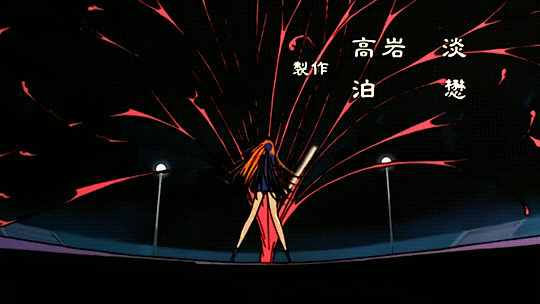
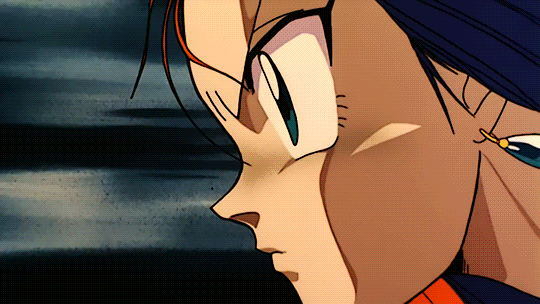
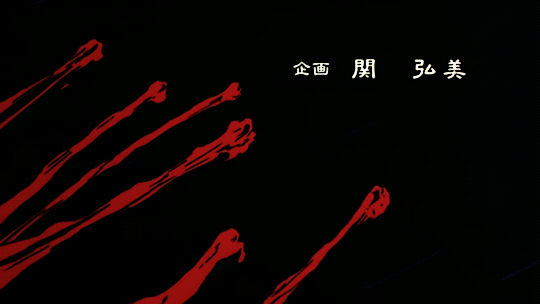
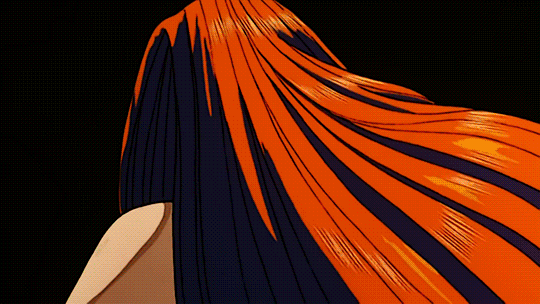

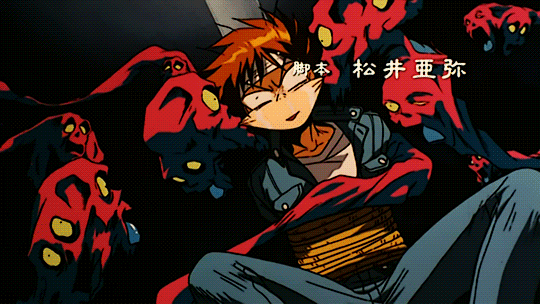
GHOST SWEEPER MIKAMI!: GOKURAKU DAISAKUSEN!! (1994) dir. ATSUTOSHI UMEZAWA
#flashing#a#f#ghost sweeper mikami#ghost sweeper mikami movie#reiko mikami#kinu himuro#tadao yokoshima#atsutoshi umezawa
90 notes
·
View notes
Photo


“SOUL OF GOLD” TO BE SET IN ASGARD
Toei Animation just announced more information about “Saint Seiya: Soul of Gold“ plot.
The series' storyline will develop right after the Hades chapter, when the Gold Saints mysteriously come back to life in none other place than Asgard, home of Odin and the God Warriors.
The new series is produced by Atsutoshi Umezawa who also worked on Sailor Moon Crystal and chacarter designs by Hideyuki Motohashi, who was also the animation director of Saint Seiya Hades Chapter Sanctuary.
“Saint Seiya: Soul of Gold” will premiere in Japan on April 12, 2015.
#Saint Seiya#Soul of Gold#Saint Seiya Soul of Gold#News#Atsutoshi Umezawa#Hideyuki Motohashi#Toei Animation
144 notes
·
View notes
Text
Toei Animation & Sotsu's Idol & Edo-themed Project SHAREDOL Releases A Stunning Pilot Film
SHAREDOL, a new collaboration project by Japanese anime production company Toei Animation and advertising agency Sotsu, has released a three-minute pilot film to introduce its main characters and world view on the former's official YouTube channel.
The song featured in the clip, "SHA☆LA☆LA☆Sharakusee!!!" is performed by Lir:∀ (pronounced Leela), a female singe who made her professional debut in February 2019. She writes on Twitter, "All of them are so cute... I, Lir:∀, like Kunoichi-chan among them. You can see them in action on YouTube, so I hope you'll find your favorite too!"
The story of SHAREDOL is set in the Edo period, the Kansei era (1789-1800), a time when entertainment was strictly restricted. Based on the idea of "What if we used the knowledge of modern idols to produce Edo girls?," it depicts idol activities of girls living with their own problems. The protagonist produces six girls - a teahouse girl, a samurai girl, a Dutch trading house girl, a merchant girl, an oiran (high-ranking courtesan), and a kunoichi (female ninja), who have lived a different life.
youtube
The clip also announced the project's main staff as below:
Planning and Production: Atsutoshi Umezawa (Toei Animation), Hideyuki Namba (Sotsu)
Chief Producer: Shintaro Fukase (Toei Animation), Takayuki Funabashi (Sotsu)
Producer : Kouki Higure (Sotsu)
Director: Yoshihiro Kanno (Sword Art Online action animation director)
Character Design / Chief Animation Director: Minami Yoshida
Art Design/ Background: Kenji Matsumoto
Color Design/Color Specification/Inspection: Setsu Nagata
Director of Photography: Ryotaro Nakano
Editing: Nobuhiro Maki
Animation Production: Toei Animation, Dungan Pictures
Production: Toei Animation, Sotsu
#洒落どる 遂に動画公開!
いつも忙し令和の人々、
ちょいと見とくれ自慢の動画。
見るのにお代は要りませぬ。
東映アニメのゆうちゅうぶ。
お気に召してくれたなら
いいね!とコメントくださいな。https://t.co/Nbjo8yWF0F#こんな世の中しゃらくせえ#SHAREDOL pic.twitter.com/10M9UTK0cf
— アニメ『洒落どる(しゃれどる)』(パイロットフィルム)公式 (@sharedol) October 25, 2021
Main characters:
Girl A (teahouse girl): She is an energetic girl who is curious and unafraid to put her all into what's in front of her.
Girl B (samurai girl) - The so-called Yamato Nadeshiko. She always looks cool, and yet she is not good at expressing herself.
Girl C (Dutch trading house girl) - A mood maker with an open-minded personality. She is big in size, voice and attitude.
Girl D (merchant girl): She is younger than the other members and still immature. She is bossy, but also spoiled, having a tsundere personality.
Girl E (oiran): She may look worldly-wise, but she is a lonely loner. She solves problems that occur inside and outside the group.
Girl F (kunoichi): On the order of Roju (a member of shogun's council of elders) Sadanobu Matsudaira, she tries to find out the reality of idols, but on the contrary, she begins to be interested in them.
Source: Toei Animation press release
©️Toei Animation, Sotsu
By: Mikikazu Komatsu
0 notes
Text
The "original" production idea and direction of Sailor Moon Crystal
“I want to take the entire world of the series [Sailor Moon] in an aesthetic direction…” says director of SMC Seasons 1&2 Munehisa Sakai.
This time the animation concept is to “keep the original design of the manga as it is and turn it into an anime.”
“We want grown women who watched the original anime to watch this!”, so it seems we can hope for that same splendor of our transforming heroines with a mature feel.
An anime that will make you remember the dreams from when you were a young girl.
“Later he [producer Atsutoshi Umezawa] explained that this time we would be keeping with the style of the manga and starting a completed series over from the beginning as we turned it into an anime.”
“This time we’re aiming for a girls’ manga style, so from the very beginning we thought a woman’s delicate styling would be best. Then we heard about a woman named Yukie Sako who could draw really strong likenesses.”
“So I want to portray beauty, coolness, and aestheticism from a woman’s perspective. I hope to give them the delicate acting of a girls’ anime, the beautiful flow of the clothes and hair and make every important detail beautiful.”
For me, this isn’t a remake; it’s “the first anime based on the original manga.” says character designer Yukie Sako “I started with the cover illustrations from the Perfect Edition manga as the base for my designs.”

“It will have a bit of a mature feel…” says director Sakai
“One of the great things about the manga is how relatable it is for girls.”
Anime are often made by men, so I think it’s pretty difficult to convey the nuances of a manga written by a woman…"
Translation by: ainomessage
Source: Animage Magazine July 2014 (https://missdream.org/sailor-moon-interviews-and-articles/sailor-moon-crystal-article-in-animage-july-2014-issue/)
Magazine Scan by: mizunocaitlin
#sailor moon#sailor moon crystal#bishoujo senshi sailor moon#bishoujo senshi sailor moon crystal#smc
282 notes
·
View notes